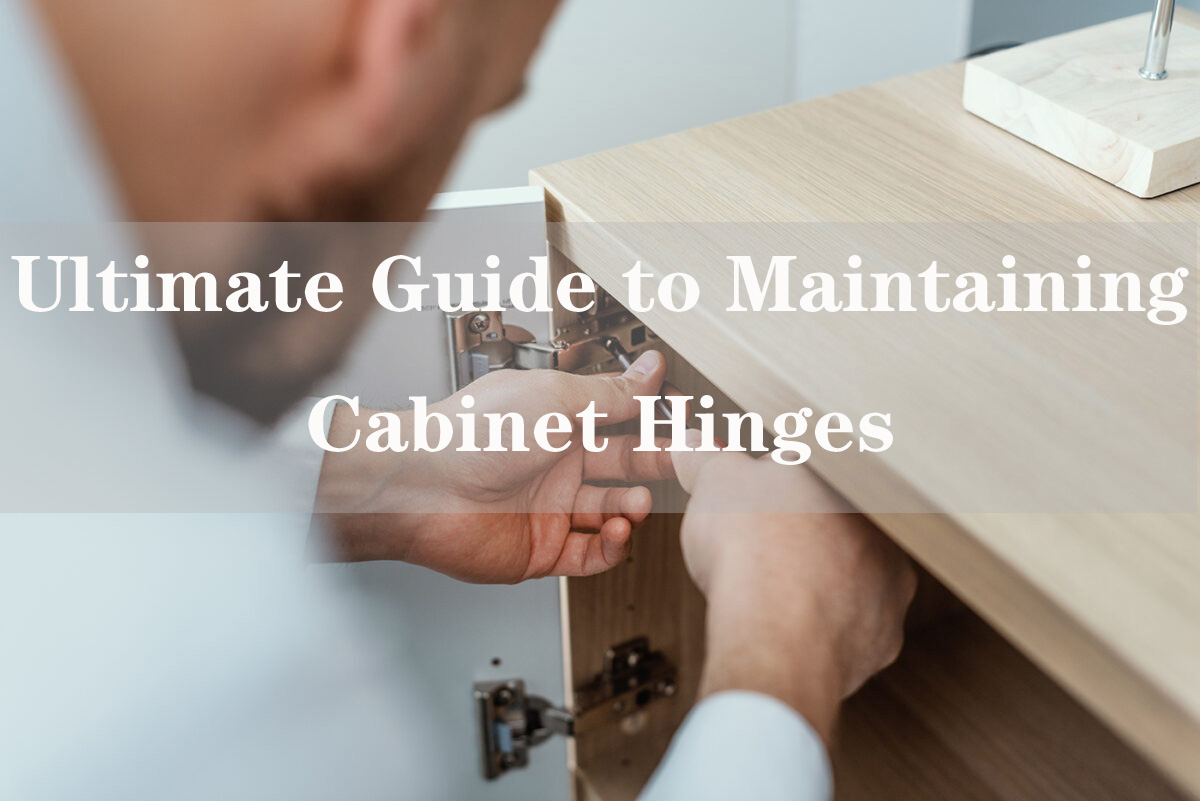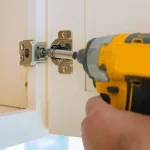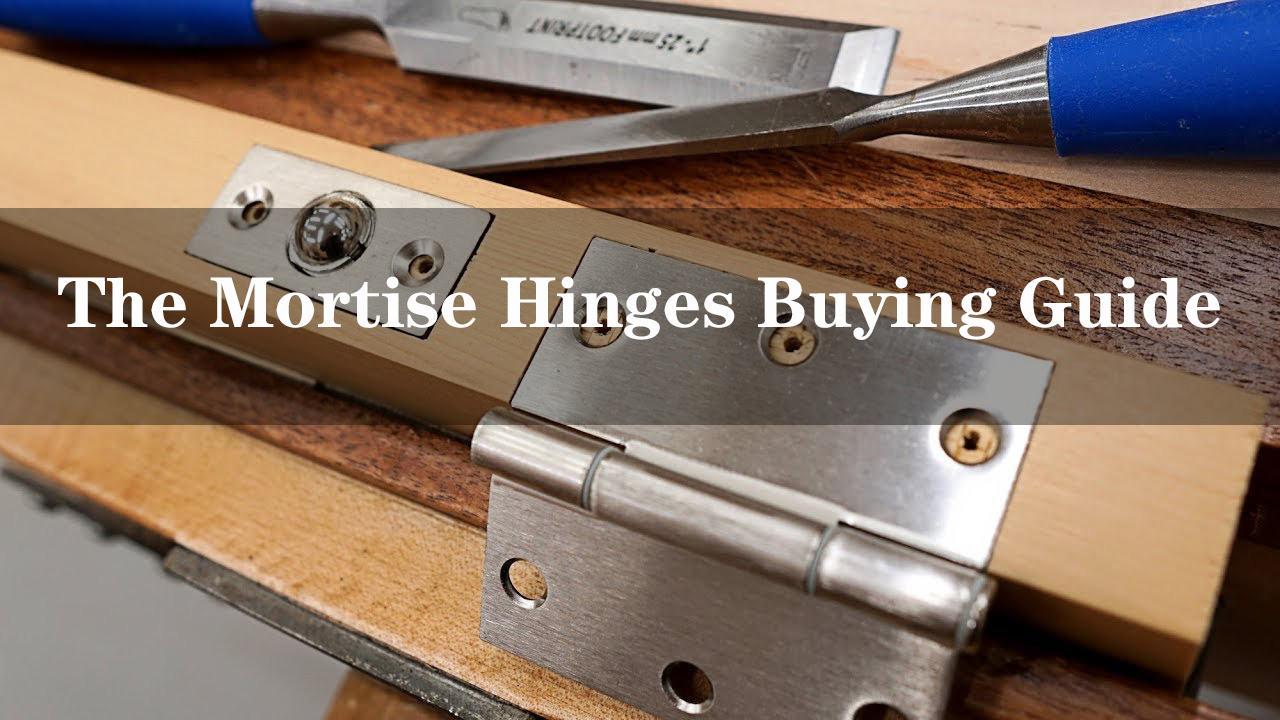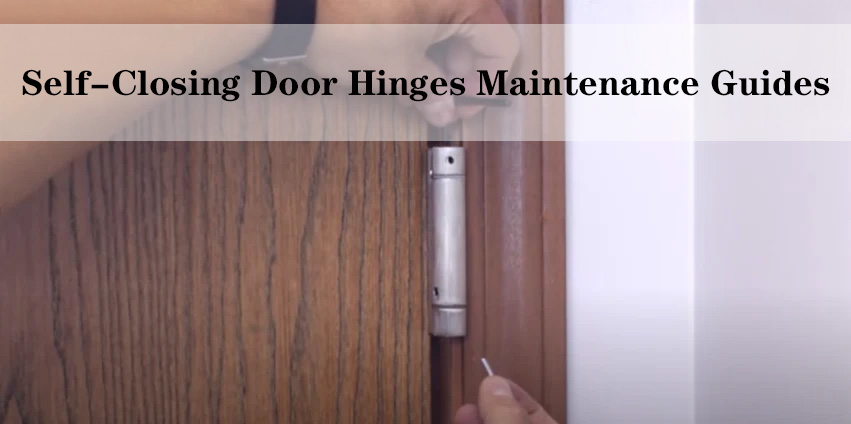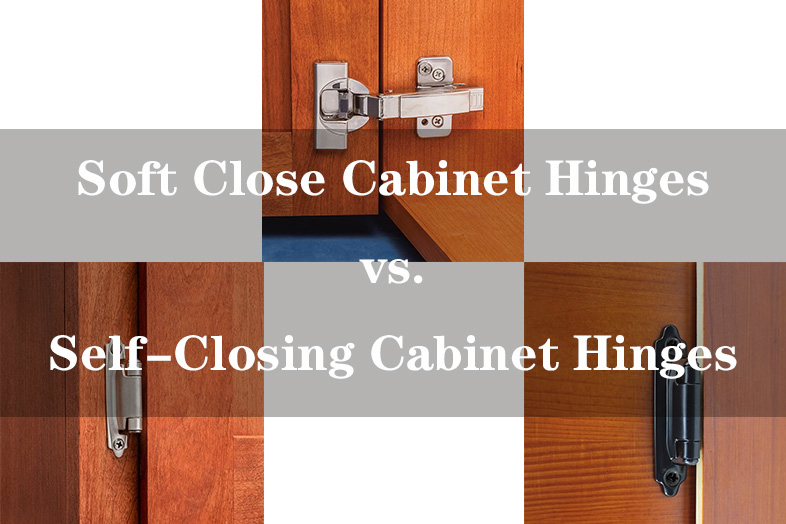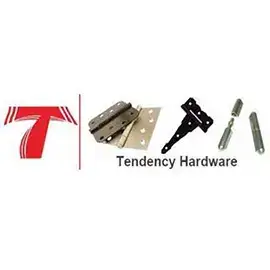Cabinet hinges are essential components that ensure the smooth operation of cabinet doors. However, like any mechanical part, they can wear out or become misaligned over time. Regular maintenance not only extends the life of your cabinet hinges but also enhances the overall functionality of your cabinets. In this comprehensive guide, we will delve into the importance of hinge maintenance, the types of cabinet hinges, step-by-step maintenance tips, troubleshooting common issues, and best practices for keeping your cabinet hinges in top shape.
Understanding Cabinet Hinges
Before diving into maintenance, it’s crucial to understand the different types of cabinet hinges and their specific functions.
Types of Cabinet Hinges
Concealed Hinges: These are hidden when the cabinet door is closed. They provide a clean look and are common in modern cabinetry.
Overlay Hinges: These are used when the cabinet door overlaps the cabinet frame. They allow for full access to the cabinet’s interior.
Inset Hinges: These are used when the cabinet door is flush with the frame. They require precise alignment and installation.
Piano Hinges: A continuous hinge that runs the entire length of the door. They are often used in larger cabinets or specialized applications.
Understanding these types will help you appreciate their unique maintenance needs.
Importance of Regular Maintenance
Regular maintenance of cabinet hinges is not just a matter of convenience; it has far-reaching benefits that can significantly enhance the performance and longevity of your cabinetry. Below, we explore these benefits in detail:
1. Functionality
One of the most immediate benefits of maintaining cabinet hinges is improved functionality. Over time, hinges can accumulate dust, debris, and grime, which can impede their movement. If left unattended, you may experience:
Stiffness: Hinges that are not lubricated can become stiff, making it difficult to open and close cabinet doors.
Squeaking: Lack of lubrication can also lead to irritating squeaks that disrupt the tranquility of your home.
Misalignment: Dirt buildup can cause hinges to shift, leading to misaligned doors that do not close properly.
Regular maintenance ensures that hinges operate smoothly, providing hassle-free access to your cabinets.
2. Longevity
Cabinet hinges, like any mechanical component, have a lifespan that can be extended with proper care. Here’s how regular maintenance contributes to longevity:
Preventing Wear and Tear: Routine cleaning and lubrication reduce friction, preventing premature wear on the hinge components.
Avoiding Rust: Metal hinges are prone to rust, especially in humid environments. Regular inspections and cleaning can help identify early signs of rust, allowing for timely intervention before it compromises the hinge’s integrity.
Extending Replacement Cycles: By investing time in maintenance, you may extend the need for hinge replacements significantly, saving both time and money in the long run.
3. Aesthetics
The appearance of your cabinetry can greatly affect the overall look of your space. Regularly maintained hinges contribute to the aesthetic appeal in several ways:
Cleanliness: Clean hinges look more polished and visually appealing, enhancing the overall impression of your cabinets.
Functional Design: Well-maintained hinges operate seamlessly, allowing cabinet doors to open and close properly without visible gaps or misalignment that can detract from the cabinetry’s appearance.
Preservation of Finishes: Regular cleaning helps preserve the finish of both the hinges and the cabinet doors, preventing dullness and discoloration.
4. Safety
Neglecting hinge maintenance can lead to safety hazards, especially in homes with children or in high-traffic areas. Here’s how regular upkeep enhances safety:
Preventing Accidents: Loose or damaged hinges can cause cabinet doors to fall or swing unexpectedly, posing a risk of injury.
Ensuring Stability: Regularly tightening screws and inspecting for damage ensures that hinges maintain their structural integrity, which is crucial for safety.
5. Cost-Effectiveness
Maintaining your cabinet hinges can ultimately lead to significant cost savings:
Avoiding Major Repairs: Proactive maintenance can help you avoid the costs associated with major repairs or replacements of hinges and, in some cases, entire cabinets.
Reducing Downtime: Quick maintenance checks can prevent prolonged periods of inconvenience due to malfunctioning doors, allowing you to use your space efficiently.
Increasing Home Value: Well-maintained cabinets can enhance the overall value of your home, making it more attractive to potential buyers.
6.Peace of Mind
Lastly, regular maintenance provides peace of mind. Knowing that your cabinet hinges are in good condition can alleviate concerns about functionality, safety, and aesthetics. This assurance allows you to focus on other aspects of your home without worrying about potential hinge-related issues.
Step-by-Step Maintenance Guide
Maintaining cabinet hinges is a straightforward process that can be tackled with minimal tools and time. Below, we break down each step in detail to help you keep your hinges in optimal condition.
1. Cleaning Your Cabinet Hinges
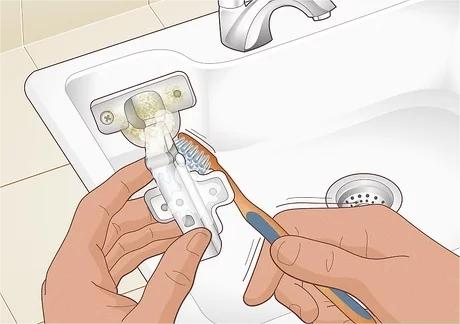
Tools Needed:
Soft cloth or sponge
Mild detergent
Water
Old toothbrush (for hard-to-reach areas)
Steps:
Remove Dust and Debris: Begin by using a soft cloth to gently wipe away any visible dust and debris from the hinges. This helps to prevent buildup that can cause friction.
Create a Cleaning Solution: In a bowl, mix a few drops of mild detergent with warm water. Avoid harsh chemicals that could damage the finish of your hinges or cabinets.
Scrub: Dip the old toothbrush into the cleaning solution. Carefully scrub around the hinges, focusing on any crevices where dirt may be trapped. The toothbrush’s bristles will help dislodge stubborn grime.
Rinse and Dry: After scrubbing, use a damp cloth to wipe away soap residue. It’s essential to dry the hinges thoroughly with a clean cloth to prevent moisture accumulation, which can lead to rust.
2. Lubricating Hinges
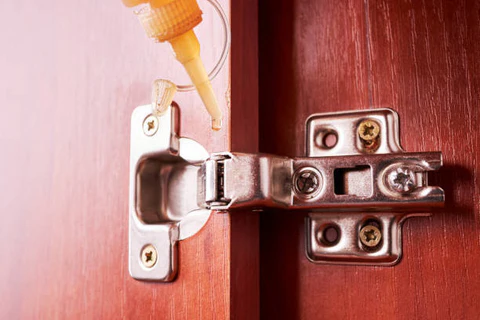
Tools Needed:
Lubricating oil (such as WD-40 or silicone spray)
Cloth or paper towels
Steps:
Identify the Hinges: Inspect each hinge to determine if lubrication is needed. Look for signs of stiffness or unusual noise when opening or closing the cabinet doors.
Apply Lubricant: Lightly spray a small amount of lubricant directly onto the hinge. Be careful not to over-apply, as excess lubricant can attract dirt.
Work the Hinge: Open and close the cabinet door several times to allow the lubricant to penetrate the moving parts. This action distributes the lubricant evenly and helps restore smooth operation.
Wipe Excess: After working the hinge, use a cloth to wipe away any excess lubricant. This step prevents drips and keeps the area clean.
3. Tightening Loose Hinges
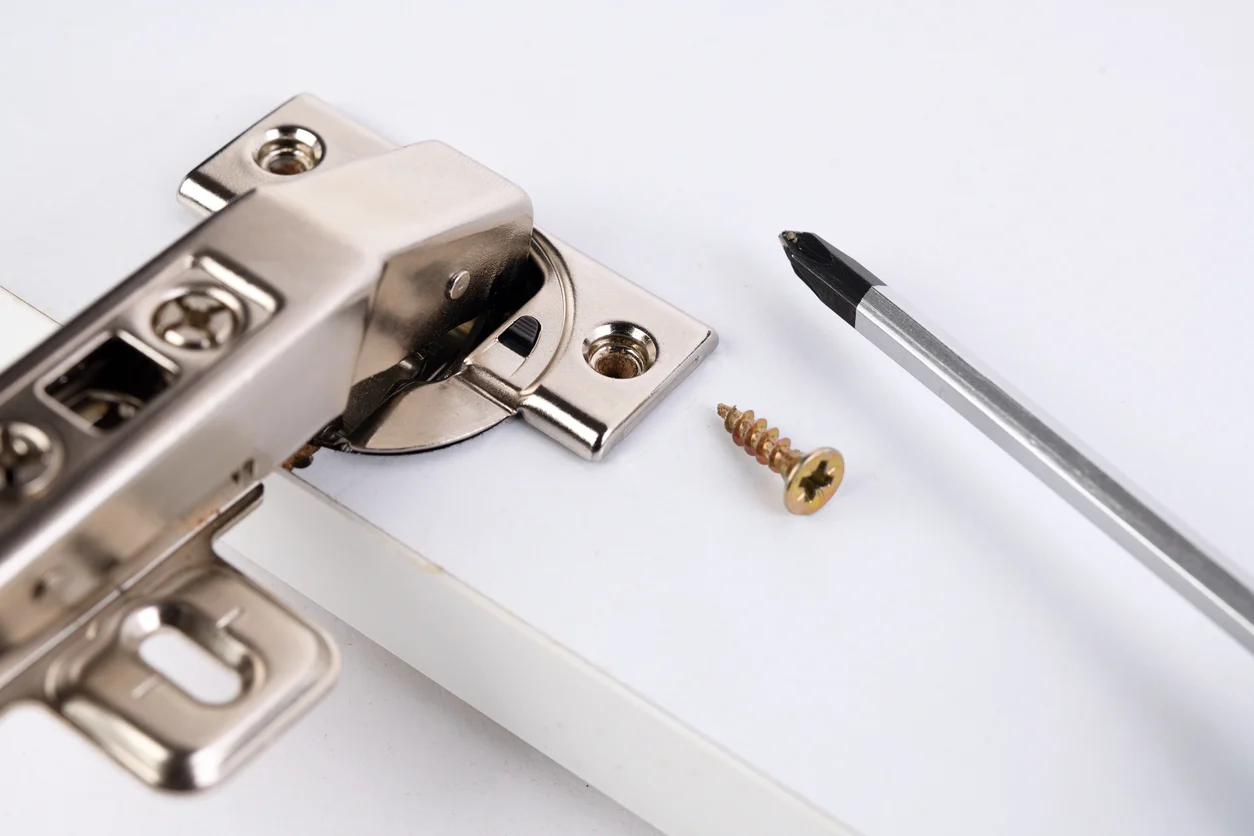
Tools Needed:
Screwdriver (ensure you have the correct size)
Steps:
Inspect Hinges: Closely examine each hinge for any loose screws. A quick visual inspection can reveal which hinges need attention.
Tighten Screws: Use the screwdriver to tighten any loose screws. Be cautious not to overtighten, as this can strip the wood or damage the hinge itself.
Check Alignment: After tightening, ensure the cabinet door is properly aligned with the cabinet frame. This alignment is crucial for smooth operation.
4. Adjusting Cabinet Doors
Tools Needed:
Screwdriver
Level (optional)
Steps:
Identify Misalignment: Close the cabinet door and look for gaps or unevenness between the door and the cabinet frame. Misalignment can occur due to wear or environmental changes.
Adjust the Hinge: Many hinges come with adjustment screws that allow you to reposition the door. Loosen these screws slightly to make adjustments without completely removing the hinge.
Re-tighten: Once the door is aligned correctly, tighten the adjustment screws securely. Make sure to check that the door opens and closes smoothly.
Test the Door: After adjustments, open and close the door several times to ensure it operates without any resistance.
5. Inspecting for Damage
Steps:
Check for Rust: Look closely at metal hinges for any signs of rust or corrosion. Rust can compromise the integrity of the hinge, so it’s important to address it promptly.
Look for Wear: Examine the hinge for cracks, bending, or other signs of wear. Any significant damage can hinder the hinge’s performance.
Replace if Necessary: If you find any damaged hinges, it’s advisable to replace them. Make sure to select hinges that match the specifications of your cabinets for proper function and aesthetics.
Troubleshooting Common Issues
Even with regular maintenance, cabinet hinges can sometimes encounter problems. Here are some common issues you might face, along with their causes and solutions:
1. Squeaky Hinges
Cause: A lack of lubrication can lead to friction between the moving parts of the hinge, resulting in annoying squeaks when the door is opened or closed.
Solution: Apply a small amount of lubricating oil, such as WD-40 or silicone spray, directly to the hinge. Open and close the door several times to allow the lubricant to work into the hinge, eliminating the squeak.
2. Doors Won’t Stay Closed
Cause: Loose hinges or misalignment can cause cabinet doors to swing open or not close completely.
Solution: Inspect the hinges for loose screws and tighten them with a screwdriver. If the door is misaligned, adjust the hinges using their adjustment screws to ensure a snug fit against the cabinet frame.
3. Misaligned Doors
Cause: Over time, cabinet doors can shift due to environmental factors, frequent use, or improper installation.
Solution: Check the alignment of the door by closing it and observing any gaps. Use a screwdriver to adjust the hinge placement or tighten the screws to correct the alignment. Make minor adjustments until the door sits flush with the cabinet.
4. Rust on Hinges
Cause: Exposure to moisture can lead to rust formation on metal hinges, especially in areas with high humidity.
Solution: Remove any rust with a wire brush or sandpaper. After cleaning, apply a rust-resistant paint or replace the hinges entirely if the damage is severe. Additionally, ensure that hinges are regularly cleaned and dried to prevent future rusting.
5. Loose or Wobbly Hinges
Cause: Regular use can cause screws to loosen over time, leading to wobbling or instability in the hinge.
Solution: Tighten all screws securely with a screwdriver. If the screws are stripped or the wood has deteriorated, consider using larger screws or wood filler to secure the hinge firmly in place.
6. Difficulty Opening or Closing Doors
Cause: Accumulated dirt, grime, or debris can obstruct the movement of the hinge, making it hard to operate the door.
Solution: Clean the hinges thoroughly, ensuring all dirt is removed. Apply lubricant to allow for smoother operation. Check for any physical obstructions within the cabinet that may be causing resistance.
Best Practices for Keeping Cabinet Hinges in Top Shape
To ensure that your cabinet hinges remain in excellent condition, follow these best practices:
1. Regular Inspections
Schedule routine checks of your cabinet hinges every few months. Look for signs of wear, looseness, or misalignment. Early detection of issues allows for timely repairs, preventing more significant problems down the line.
2. Gentle Use
Avoid excessive force when opening and closing cabinet doors. Gentle handling reduces stress on the hinges and minimizes wear and tear, helping them last longer.
3. Use Appropriate Products
When cleaning and lubricating hinges, choose products that are safe for the materials involved. Avoid harsh chemicals that could damage the finish of the hinges or cabinets.
4. Monitor Environmental Conditions
Be mindful of humidity and temperature changes in your home. High humidity can lead to rust, while extreme temperatures can cause materials to expand or contract, affecting hinge performance. Consider using rust-resistant hinges in areas prone to moisture.
5. Keep Hinges Clean
Regularly clean the hinges to prevent dirt and grime buildup. Use a soft cloth and mild detergent to keep them free from debris, which can cause friction and affect functionality.
6. Lubricate Periodically
Make lubrication a part of your maintenance routine. Apply a small amount of lubricating oil every six months or whenever you notice stiffness or noise. This keeps the hinges moving smoothly and reduces wear.
7. Tighten Screws as Needed
Periodically check the screws on your hinges. Tighten any loose screws to maintain proper alignment and stability. Avoid overtightening, which can strip the wood or damage the hinge.
8. Consider Upgrades
If you frequently encounter issues with your current hinges, consider upgrading to higher-quality or specialty hinges that better suit your cabinet design and usage needs.
Conclusion
Maintaining cabinet hinges is a straightforward but crucial aspect of home upkeep. By following these detailed steps and tips, you can ensure that your cabinet doors operate smoothly and last for years to come. Regular cleaning, lubrication, and inspections will not only enhance the functionality of your cabinets but also contribute to their overall aesthetic appeal. Invest a little time in maintenance now, and you’ll enjoy the benefits for the long haul.
